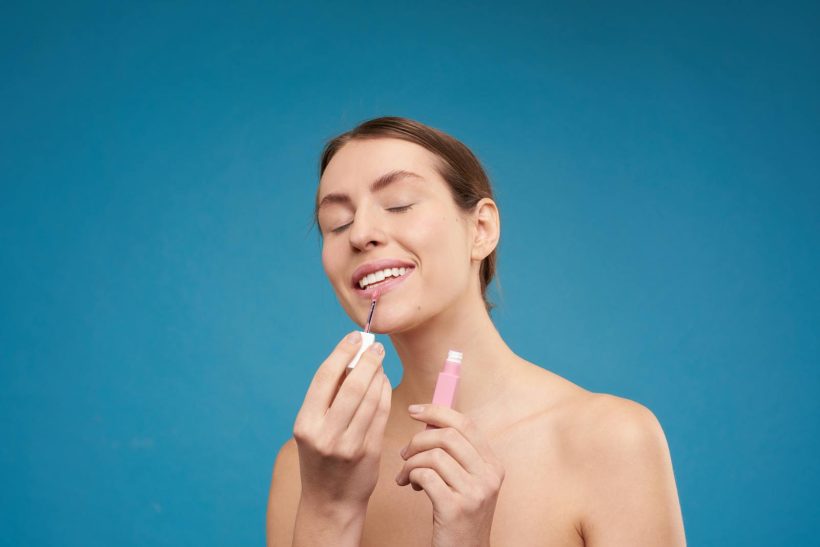Introduction
Achieving flawless skin year-round can seem daunting with the constant changes in weather and environmental factors. This comprehensive guide, “Second Skin Guide: Flawless Seasonal Skincare and Makeup Tips,” will help you navigate through each season with ease. We’ll explore the importance of adjusting your skincare and makeup routine to match the demands of each season, ensuring your skin remains healthy and radiant.
Types and Categories
Table
| Season | Skincare Tips | Makeup Tips |
|---|---|---|
| Spring | – Light exfoliation to remove winter buildup | – Use a lightweight foundation for a fresh look |
| – Hydrating serums to balance skin after cold weather | – Pastel shades for eyes and lips to reflect the season | |
| – SPF protection as UV rays increase | – Dewy finishes to complement springtime glow | |
| Summer | – Oil-free moisturizers to prevent excess shine | – Tinted moisturizers or BB creams for a breathable base |
| – Stronger SPF to protect against intense sun | – Waterproof makeup to withstand heat and humidity | |
| – Antioxidant serums to combat free radical damage | – Bright, bold colors for a vibrant look | |
| Autumn | – Rich moisturizers to prepare for cooler, drier air | – Foundation with medium coverage to even out skin tone |
| – Gentle exfoliation to remove summer damage | – Warm, earthy tones for eyeshadows and lipsticks | |
| – Incorporate serums with vitamins C and E for skin repair | – Matte finishes to match the season’s texture | |
| Winter | – Heavy, hydrating moisturizers to combat dry air | – Full coverage foundation for a flawless base |
| – Use of hyaluronic acid to retain moisture | – Neutral, deep shades for a classic winter look | |
| – Overnight masks to rejuvenate skin | – Cream-based products for added hydration and smooth application |
Table of Contents
Spring Skincare and Makeup

Lightweight Moisturizers
As the weather warms up, it’s crucial to switch to lightweight moisturizers that provide hydration without feeling heavy on the skin. Ingredients like hyaluronic acid are perfect for maintaining moisture without clogging pores.
Natural and Dewy Makeup Looks
Spring is the season for fresh, natural looks. Opt for BB creams or tinted moisturizers to achieve a dewy finish. Light pastel eyeshadows and soft blushes can enhance your features without overwhelming your natural beauty.
Summer Skincare and Makeup

Sun Protection Essentials
Summer skincare begins with sun protection. A broad-spectrum SPF of at least 30 should be a daily staple to protect against harmful UV rays. Reapply every two hours, especially when outdoors.
Sweat-Proof Makeup Tips
To keep your makeup intact in the heat, use a mattifying primer and setting spray. Waterproof mascara and long-lasting lip stains can withstand sweat and humidity, ensuring you look fresh all day.
Fall Skincare and Makeup
Hydrating Serums
As the air becomes cooler and drier, incorporate hydrating serums with ingredients like glycerin and vitamin E. These will help retain moisture and prepare your skin for the colder months ahead.
Warm and Earthy Makeup Tones
Fall is the perfect time to experiment with warm, earthy tones. Shades of brown, gold, and burnt orange can create a cozy and inviting makeup look that complements the season’s palette.
Winter Skincare and Makeup

Rich Moisturizers and Oils
Winter demands richer moisturizers and facial oils to combat dryness. Products containing ceramides and shea butter can provide the necessary barrier against cold, harsh winds.
Bold and Festive Makeup Trends
Winter is also the season for bold makeup. Deep red lips, smokey eyes, and shimmering highlighters can add a festive touch to your look, perfect for holiday gatherings.
Symptoms and Signs

Spring
Dryness and Allergies
With the blooming of flowers, many experience allergies that can lead to dry, irritated skin. Understanding these symptoms is crucial for adjusting your skincare routine to maintain hydration and soothe irritation.
How to Address Seasonal Changes
Implementing a gentle exfoliation routine and using calming ingredients like aloe vera can help manage these seasonal skin changes effectively.
Summer

Excess Oil and Breakouts
The increased heat and humidity in summer can lead to excess oil production and breakouts. Recognizing these symptoms early allows for quick adjustments in your skincare regimen, such as using oil-free products and incorporating salicylic acid to control oil.
Managing Heat and Humidity
Using lightweight, non-comedogenic products can help your skin breathe and reduce the risk of acne, while regular cleansing keeps pores clear.
Fall
Transitional Skin Issues
The transition from summer to fall can confuse your skin, often leading to a combination of dryness and leftover summer oiliness. Identifying these issues helps in balancing your skincare routine to address both problems simultaneously.
Adapting to Cooler Weather
Gradually incorporating more hydrating products and layering your skincare can help your skin adapt smoothly to the cooler temperatures.
Winter
Dryness and Flakiness
Cold weather can strip your skin of natural oils, leading to severe dryness and flakiness. Recognizing these symptoms early allows for the introduction of more intensive moisturizing treatments.
Protecting Against Cold Winds
Using occlusive products like ointments and balms can help create a protective barrier against harsh winds, preventing moisture loss.
Causes and Risk Factors

Biological Factors
How Skin Reacts to Seasonal Changes
Understanding the biological response of your skin to changes in temperature and humidity can help in tailoring your skincare routine more effectively.
Environmental Factors
Impact of Weather and Pollution
Seasonal variations in weather and pollution levels can significantly affect skin health. Awareness of these factors enables better preparation and protection for your skin.
Lifestyle Factors
Diet and Activity Changes Throughout the Year
Seasonal changes in diet and physical activity can also impact your skin. For example, a diet rich in antioxidants during summer can help combat sun damage, while nutrient-dense foods in winter support overall skin health.
Diagnosis and Tests
Understanding Your Skin Type
Importance of Professional Diagnosis
Consulting with a dermatologist to understand your skin type is crucial for customizing your skincare routine. Professional diagnosis ensures you use products suited to your skin’s specific needs.
Seasonal Skin Assessments
Tools and Methods for Home Use
Home-use tools like skin moisture meters and pH tests can help you monitor changes in your skin throughout the year, allowing for timely adjustments in your routine.
Allergy Testing
Identifying Seasonal Allergies Impacting Skin
Seasonal allergies can exacerbate skin issues. Allergy testing can identify specific triggers, enabling you to avoid them and use appropriate treatments to soothe allergic reactions.
Treatment Options
Medical Treatments
Prescription Solutions for Severe Cases
In cases of severe skin conditions, prescription treatments from a dermatologist can provide more effective solutions than over-the-counter products.
Therapies
Spa Treatments and Professional Care
Regular professional treatments like facials, chemical peels, and microdermabrasion can help maintain skin health and address seasonal concerns more effectively.
Lifestyle Adjustments
Routine Changes for Each Season
Adjusting your skincare routine to include season-specific products and treatments can prevent issues and maintain a healthy complexion year-round.
Preventive Measures
Spring
Allergy Prevention and Skin Care
Using hypoallergenic products and keeping skin hydrated can prevent spring allergies from affecting your skin. Regular cleansing and moisturizing are key.
Summer
Sun Protection and Hydration
Prioritizing sun protection with broad-spectrum SPF and staying hydrated are essential for maintaining healthy skin during summer. Wearing hats and seeking shade can also protect your skin.
Fall
Preparing Skin for Cooler Weather
Gradually incorporating heavier moisturizers and hydrating masks can prepare your skin for the drop in temperatures, ensuring it remains supple and moisturized.
Winter
Intensive Moisturizing and Protection
Using products with occlusive ingredients and adding overnight masks to your routine can provide the extra moisture and protection needed during the cold winter months.
Personal Stories or Case Studies
Spring Transformation Stories
Real-life Examples of Skin Recovery
Stories from individuals who successfully managed their spring skin issues can provide inspiration and practical tips for others facing similar challenges.
Summer Survival Stories
Managing Sun Damage and Heat
Case studies of people who effectively managed sun damage and kept their skin healthy despite the summer heat can offer valuable insights and strategies.




